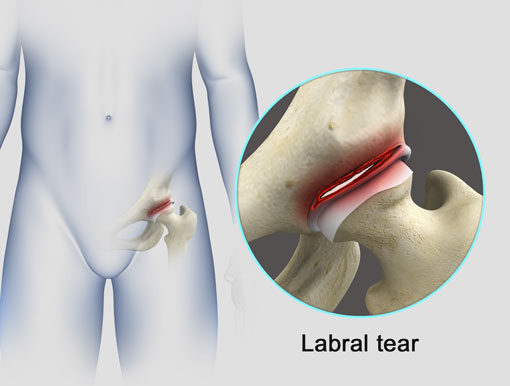
A hip labral tear involves the ring of cartilage (labrum) that follows the outside rim of your hip joint socket. Besides cushioning the hip joint, the labrum acts like a rubber seal or gasket to help hold the ball at the top of your thighbone securely within your hip socket.
Athletes who participate in sports such as ice hockey, soccer, football, golf and ballet are at higher risk of developing hip labral tears. Structural abnormalities of the hip also can lead to a hip labral tear.
Many hip labral tears cause no signs or symptoms. Some people, however, have one or more of the following:
Seek medical attention if symptoms worsen or don’t improve within six weeks.
The cause of a hip labral tear might be:
Your doctor will take a history of your discomfort. During the physical exam, your doctor will move your leg, and especially your hip joint, into various positions to check for pain and evaluate your hip’s range of motion. He or she might also watch you walk.
Treatment depends on how severe your symptoms are. Some people recover with conservative treatments in a few weeks; others need arthroscopic surgery to repair or remove the torn portion of the labrum.
Nonsteroidal anti-inflammatory drugs, such as ibuprofen (Advil, Motrin IB, others) and naproxen sodium (Aleve), can relieve pain and reduce inflammation. Pain can also be controlled temporarily with an injection of corticosteroids into the joint.
A physical therapist can teach you exercises to maximize hip range of motion and hip and core strength and stability. Therapists can also teach you to avoid movements that put stress on your hip joint.
If conservative treatments don’t relieve your symptoms, your doctor might recommend arthroscopic surgery — in which a fiber-optic camera and surgical tools are inserted via small incisions in your skin.
Depending on the cause and extent of the tear, the surgeon might remove the torn piece of labrum or repair the torn tissue by sewing it back together.
Complications of surgery can include infection, bleeding, nerve injury and recurrent symptoms if the repair doesn’t heal properly. A return to sports can take weeks to months.